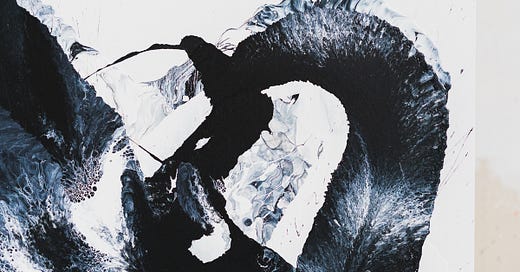I first wrote this in 2022, and it sat as the oldest draft in my Substack, untouched. Revisiting it now feels like finding an old thread I never finished weaving, especially as I’ve been thinking about these ideas again. Lately through the lens of overthinking and experimenting with new ways of working.
I don’t consider the difficulty in producing an idea a “creative block.” Every creative project involves obstacles, my most common occurrences being before starting the project, before arriving at a solution, then a finish to pull it all together. Creative work is an act of discovery and often solved through persistence.
This is obvious, but the first step is to truly understand the task at hand. Defining the objective clearly allows you to find an answer or solution. If the project setup is unclear, or if you and the client cannot communicate the objectives, it becomes impossible to produce effective work. Clarity from the start prevents unnecessary roadblocks later.
When I first started in graphic design (art, writing, etc), my biggest challenge was simply getting started. I would procrastinate for hours out of fear. The solution now is obvious: start by doing something with intent. While some suggest setting up an environment for creativity, for me, a sketchbook and music is normally the best way to begin. Quickly sketching rough concepts, especially the bad ones, helps get ideas moving. Reviewing discarded scrawls can spark new insights or unexpected misinterpretations. Leaving room for mistakes is essential; I actively invite them as part of the process. Additionally, physically leaving the room often provides clarity and helps reset my perspective.
Being aware of the process allows me to recognize stagnation and step away when needed. A short break or even an overnight reset can shift my perspective. Often, my subconscious works through the problem in the background. When juggling multiple projects, shifting focus to another task can help. If I consistently dread working on something, I break it into short, forced work sessions. If a type of project remains unbearable, I reconsider whether I should be taking on similar work at all.
Challenges often arise mid-project. Some call this a creative block, but I see it as an inevitable part of the process. Right before finding a solution, things get extremely difficult and feel like there’s no answer in sight. Recognizing this as part of creativity helps, but the only real solution is to keep looking at the issue through different vantage points.
Throwing everything away and starting over can be a drastic but effective last resort. I’ve found that beginning fresh often leads to better results in a fraction of the time. I’ve even suggested this to employees struggling with projects, and it has always yielded positive outcomes.
Some days, creativity just isn’t there. If I wake up feeling off, I shift to low-effort, organizational tasks. These “off” days are valuable for handling administrative work I wouldn’t want to waste creative energy on.
I work best when I can relax and enjoy what I’m doing. Recently, I returned from a week-long trip to an overwhelming workload, an overflowing inbox, and tight deadlines. The small tasks were easy, but the larger ones loomed over me. Some blocks stem from external pressures rather than the project itself, like doing too much. Sorting out distractions is important and one that I still work at today.
When I need to reset, I shift my focus. Sometimes that means surrounding myself with my favorite books, listening to music, or favorably changing my environment. Limiting distractions, setting artificial constraints, meditating, or talking through ideas with someone else can also help. Usually overthinking (getting stuck in your head) is what makes resetting necessary in the first place. The mind spirals into doubt and analysis paralysis, making it harder to move forward. Recognizing when I’m stuck in this loop allows me to consciously step away, recalibrate, and return with a clearer perspective.
There’s no single solution to staying inspired, but maintaining and giving space for momentum is essential.
Images are from a body of work from a few years ago. The title is on the nose: Momentum






